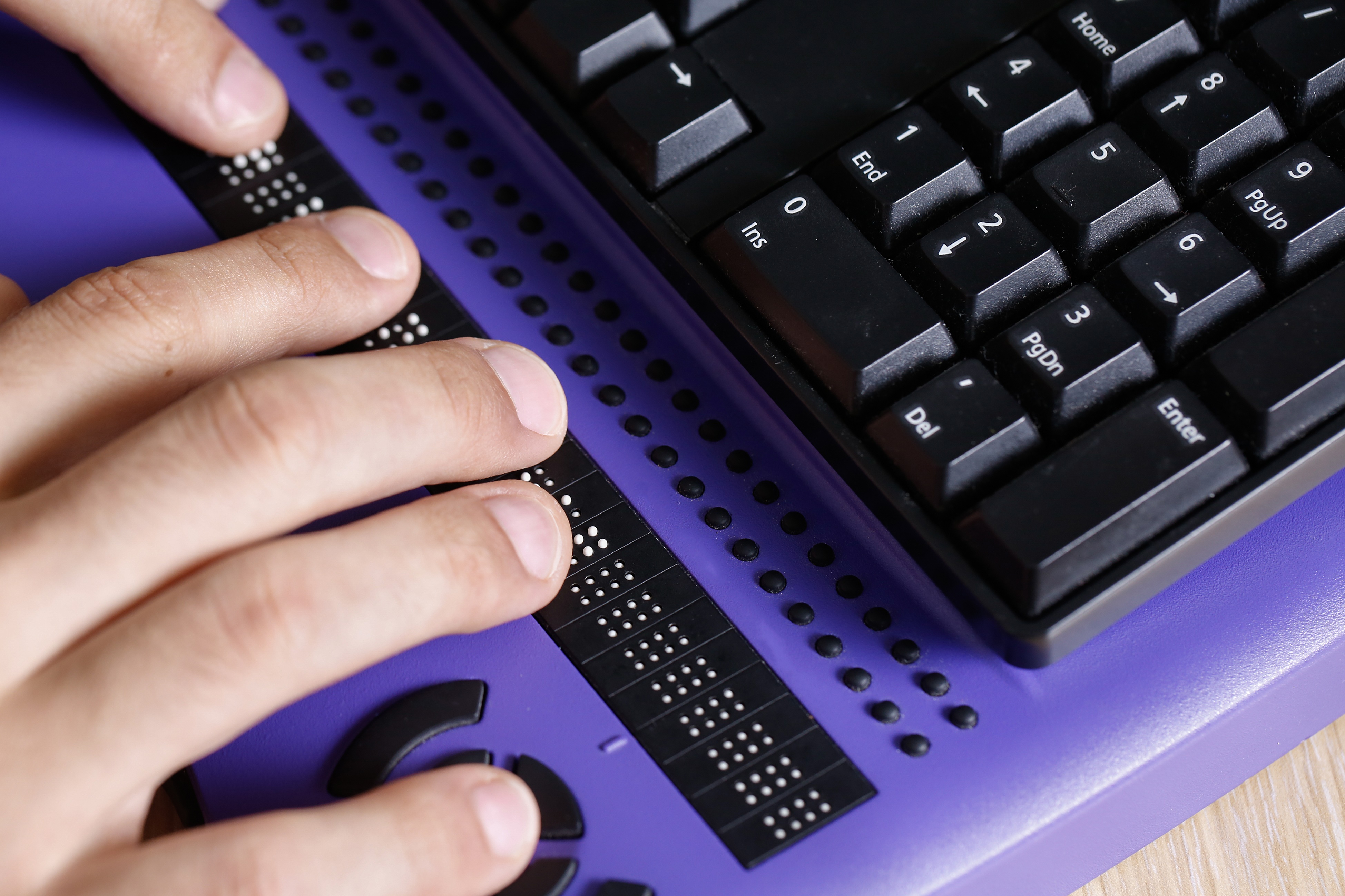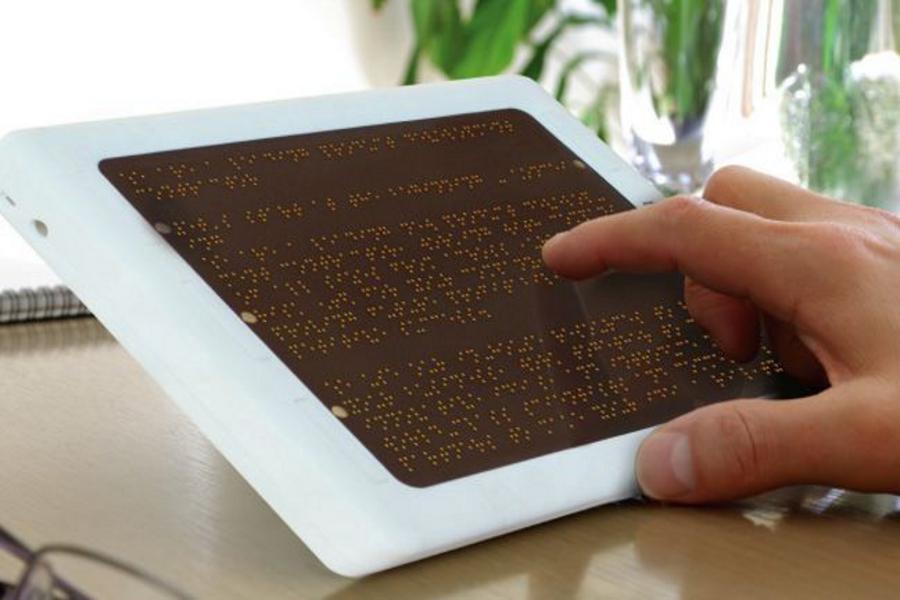Empowering Independence With Assistive Innovation for the Blind
The combination of assistive modern technology into the lives of individuals with aesthetic disabilities represents a considerable innovation in promoting self-reliance and self-sufficiency. From cutting-edge display visitors to sophisticated wise canes, these tools not only enhance day-to-day navigating and interaction yet likewise encourage customers to engage meaningfully in numerous facets of life. As we explore the myriad advantages and real-world applications of these modern technologies, it comes to be essential to analyze the hidden aspects that add to their efficiency and the possibility for future advancements in this vital area.
Review of Assistive Innovation

The advancement of assistive innovation is based in principles of inclusivity and empowerment. Technologies in software, equipment, and sensory improvements provide users with alternatives customized to their particular needs. From display visitors that transform message to speech, to responsive devices that communicate information via touch, these tools change the means people engage with their surroundings.
Along with sensible applications, assistive technology fosters better social incorporation and engagement in numerous sectors, consisting of education and learning and employment (Speech-to-text devices for low vision). As r & d remain to advance, the potential for assistive modern technology to further boost the lives of visually damaged people remains appealing, leading the way for an extra equitable culture where every person can prosper
Kinds Of Assistive Instruments
A range of assistive gadgets have actually arised to sustain individuals with aesthetic disabilities, each created to meet details demands and boost everyday performance. These tools vary from low-tech remedies to modern technologies, giving varied options for customers.
Low-tech devices include magnifiers and large-print products that aid in reading and writing. Braille devices, such as Braille stylus pens and slates, make it possible for responsive reading and communication. Alignment and wheelchair help, like white walking canes, aid customers navigate their environment safely.
On the higher end of the spectrum, electronic zoom systems and display visitors offer considerable support. Electronic magnifiers permit users to increase the size of message and pictures on screens, while screen visitors transform digital material into synthesized speech, assisting in access to details on computer systems and smart devices.
Mobile phone applications additionally play a vital role, providing features like text acknowledgment and navigating assistance. Wearable innovation, such as wise glasses furnished with enhanced fact, is becoming an appealing tool to boost situational understanding.
Benefits of Assistive Modern Technology
The assimilation of assistive innovation dramatically enhances the lifestyle for people with visual impairments. These innovations equip individuals by promoting independence, enabling them to browse their environments extra properly and carry out day-to-day jobs with higher ease. For example, display readers and magnifying software application allow individuals to access electronic info, cultivating academic and specialist opportunities that might have formerly been out of reach.
Moreover, assistive tools such as smart walking canes and general practitioners applications give real-time navigating assistance, enhancing wheelchair and security. This increased freedom not only boosts self-esteem yet likewise urges social interaction, allowing individuals to take part even more totally in their neighborhoods.
Assistive modern technology additionally helps with interaction, assisting customers get in touch with others through voice recognition and text-to-speech applications. This ability is essential for keeping partnerships and accessing vital info.
Additionally, the personalization options available with lots of assistive modern technologies guarantee that users can customize tools to their specific needs, better improving use and effectiveness. In general, the benefits of assistive technology for people with aesthetic impairments are profound, advertising an extra comprehensive society where every person can seek their ambitions and goals.
Study and Success Stories
Highlighting the transformative effect of assistive red glasses frames technology, countless study illustrate just how individuals with aesthetic disabilities have actually efficiently incorporated these tools into their day-to-day lives. One compelling instance includes an university student who utilized display analysis software application to browse scholastic materials and online resources efficiently. This modern technology not just promoted her education but also boosted her confidence in participating in discussions and group projects.
Another instance research features a specialist who uses a smartphone application developed for navigation and things recognition. By utilizing this app, he has actually reclaimed autonomy in both his individual and workplace, permitting him to commute separately and involve with colleagues much more properly.
Furthermore, a senior citizen shared her experience with braille e-readers, which allowed her to access a huge variety of literary works and stay attached with her area via book clubs.
These success stories underscore the essential role of assistive modern technology in fostering independence, enhancing lifestyle, and promoting social integration for people with visual disabilities (Smart glasses for the visually impaired). By embracing these ingenious tools, individuals can conquer difficulties and take chances that add to their expert and personal fulfillment

Future Trends in Assistive Innovation
Advancement in assistive innovation is positioned to contact lens exam redefine the landscape of support for individuals with visual problems. Emerging fads emphasize the integration of fabricated knowledge (AI) and artificial intelligence, which boost the capability of gadgets that aid with navigation and info availability. For example, AI-driven applications are currently capable of interpreting aesthetic data in real-time, allowing users to involve with their atmosphere much more individually.
Furthermore, the advancement of wearable technology is progressing quickly. Smart glasses furnished with enhanced reality (AR) can supply audio descriptions of surroundings, changing how individuals connect with public areas. These tools not just promote autonomy yet likewise foster social inclusion.
Furthermore, the Net of Points (IoT) is making homes smarter, enabling smooth connectivity in between assistive tools and everyday home appliances. This connection encourages users by allowing voice-activated controls and automatic actions tailored to private requirements.
Conclusion
Finally, assistive innovation plays look these up a critical function in equipping individuals with aesthetic impairments by enhancing their freedom and interaction with their environments. The varied variety of gadgets and applications readily available not only facilitates navigating and interaction but additionally advertises social integration and possibilities for professional and personal growth. As developments continue in this area, the capacity for enhancing the top quality of life for those with visual problems will certainly increase, promoting higher autonomy and empowerment.
